Vivo V3 Detailed User Review: Poor Man’s iPhone
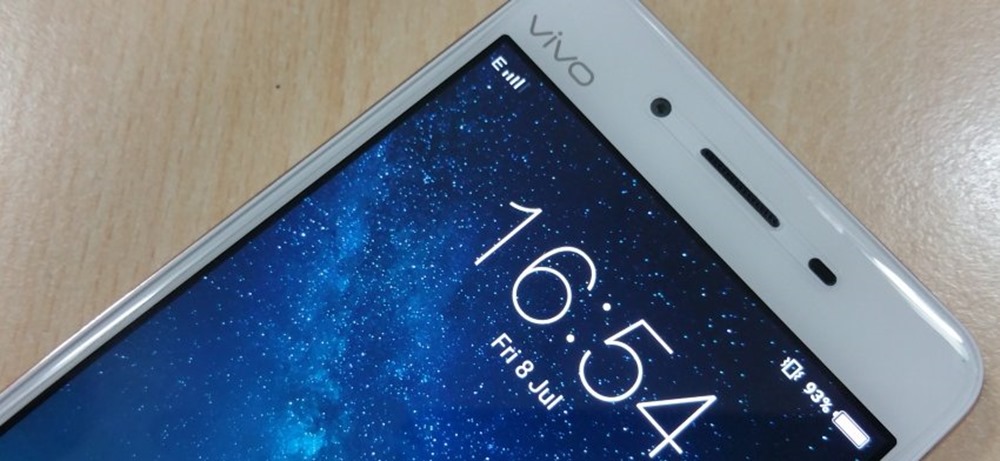
Vivo V3 is one good looking phone that resembles Apple iPhone in many aspects. My friends wrongly recognized it as an iPhone when they saw my phone from a distance so I had to tell them, “NO! It is not an iPhone. I am not falling to the dark-side yet!”
I am not a die-hard iPhone fan.
Let’s take a look at the specifications first. So you have a basic idea as to what you can expect from the phone.
Contents
Specifications: Vivo V3
- Chipset: Snapdragon 616
- CPU: 1.5 GHz quad-core + 1.0 GHz quad-core
- GPU: Adreno 405
- RAM: 3 GB
- OS: Android 5.1 Lollipop
- Display: 5.0 inch, IPS HD display
- Camera: Primary- 13 MP PDAF with LED Flash; Secondary- 8 MP FF
- Memory: Internal- 16/32 GB; External- up to 256 GB (uses SIM slot 2)
- Battery: 2550 mAh Li-ion (non-removable)
- Connectivity: 4G LTE, 3G, GPS with A-GPS and GLONASS,
- Others: Fingerprint scanner, FM Radio, USB 2.0 port, Bluetooth 4.1, dual SIM, EDGE, HSPA, WiFi
Now before you start reading the review, I would like to mention my first impression about the phone. Vivo V3 costs Rs. 16,290 which is too outrageous for a phone offering such set of hardware specifications. I had all sorts of doubts like…I was surprised as to how can such a new brand (fairly new in India) price its phone like this? What are they aiming for! Don’t they want to gain market share first before reaping profits?
With these things in mind I started using the phone. Fast forward a few days, I am in love with the phone!
Read the whole review to find out those small things that changed my mind about Vivo V3.
Design & Display
I had a rose gold colour option of Vivo V3 for review. Currently only a few phones come in this colour variant featuring a unibody metal body design. So my friends’ confusion was understandable. The phone is light-weight at 138g and feels good to hold thanks to its round edges
I would give Vivo full marks for designing the back side of the V3. It just looks fabulous. The Vivo logo is scribed into the back panel right at the centre. The top-left portion has the camera module and an LED flash just below it. The fingerprint scanner is located at the centre in the top portion.
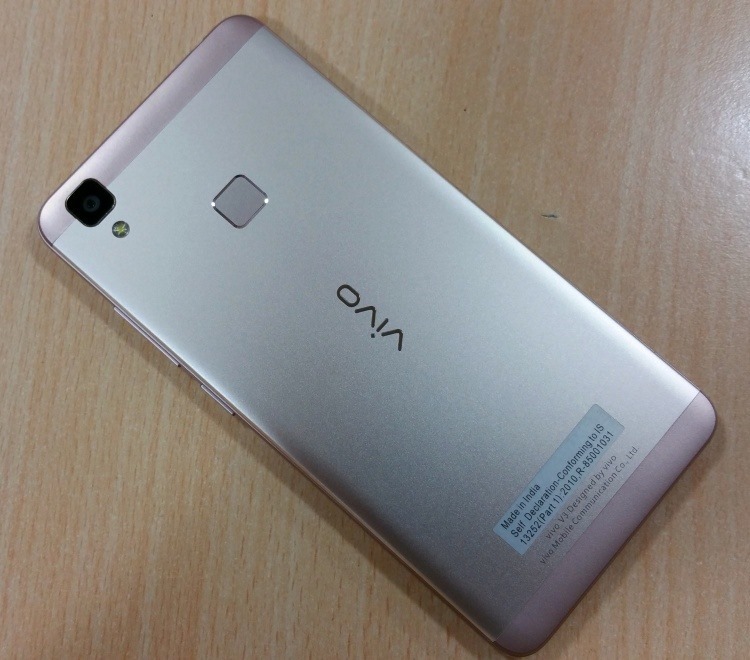
The fingerprint scanner and the LED flash have diamond cut bezel around them whereas the camera module has a standard metallic bezel protruding slightly outside for protecting the lens against scratches.
Talking about the sides of the phone, a metallic rim runs around all the edges whereas the left and the right sides have a visible diamond-cut design which is a part of the aluminum back panel. The left side houses the SIM tray, right side has the volume rocker and the power button offering a distinct tactile feedback when pressed.
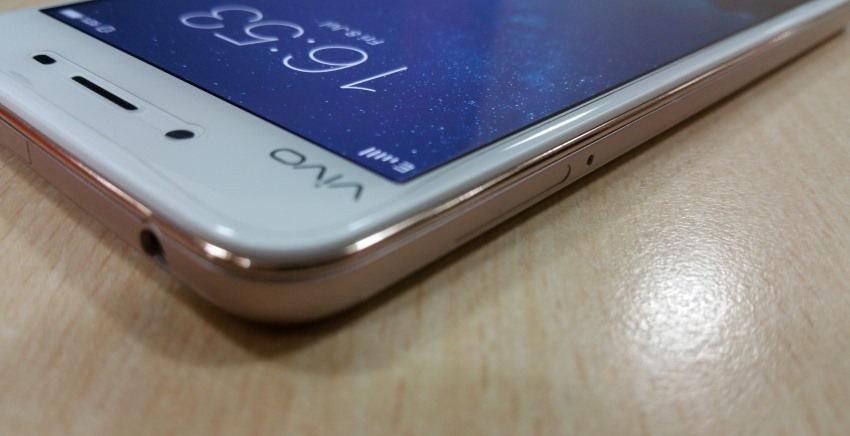
The top of the phone houses the audio-jack on the left side and the microSD card slot at the right. The bottom portion has the USB port at the centre and the loudspeaker grille at the right.
The front portion has 3 standard non-backlit navigation buttons which causes a lot of trouble until you get used to them. The top portion of the front side has the front snapper on the left, the earpiece grille at the centre, and the p-sensor on the right.

The build quality of the phone is average at best. I noticed light leakage from various places in the phone. You’ll easily notice the light leakage near the LED indicator.
My review unit also had faint pink areas at the bottom of the display (sometimes) which were noticeable only on close inspection. This is nothing to worry about but maybe I was expecting more especially given it’s price point.
Vivo V3 has a 5 inch IPS LCD HD display which is good to look at. At first, before using the phone as a daily driver I thought that its display will disappoint me as it is just a 720p display and I am used to seeing a 2K display now. But trust me, it didn’t! The display’s white balance is somewhat tuned towards the warmer side but it looks good.
User Interface, Memory, and Storage
Vivo V3 runs on Funtouch OS based on Android 5.1.1 out-of-the-box. It also said to receive Android Marshmallow update in due course of time. The UI is very smooth and the phone will fetch you anything without any lag.
I called this phone, a Poor Man’s iPhone for a reason. It is not just about the looks. Even the UI of the phone is very similar to iOS. A swipe-up from the bottom of the screen brings up the control toggles for WiFi, Bluetooth, Brightness, Sound, Flashlight, etc.
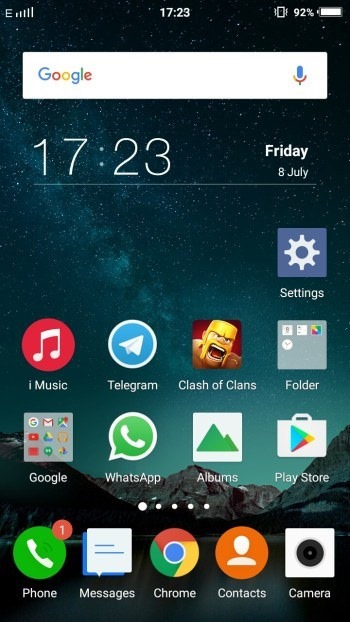
You also swipe down from the top of the screen to fetch the ‘Search’ console which can be configured to search through apps, contacts, messages, notes, file manager, etc.

V3 is full of intuitive features that help justify its price tag with the notable exception of an IR port. Yes, you can’t use Vivo V3 as a universal remote.
The phone supports various gestures and features like Smart wake, double tap to turn off screen, double click to light, light screen when out of pocket, smart call, smart remind, super screenshots including support for screen recording up to 59 mins 59 sec, any many more. It also allows you to configure what the ‘Volume down’ button would on long press it when the display is off. Vivo calls this features as Smart click.
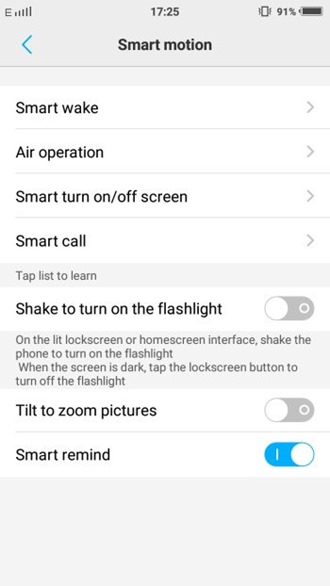
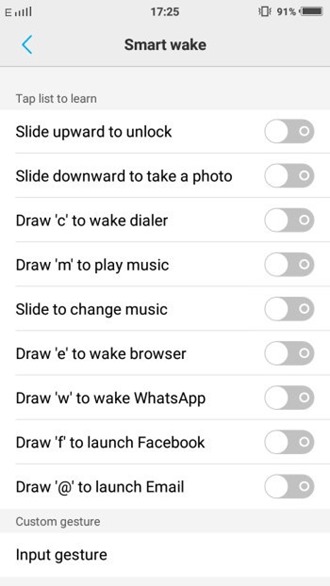
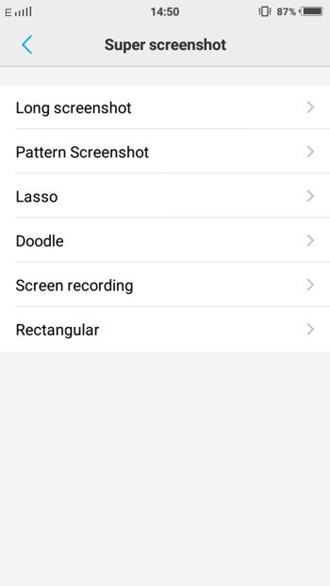 The phone comes in 2 ROM variants- 16 GB and 32 GB. It also supports expandable memory up to 256 GB and boasts 3 GB RAM.
The phone comes in 2 ROM variants- 16 GB and 32 GB. It also supports expandable memory up to 256 GB and boasts 3 GB RAM.
Performance
We do not run any benchmarking apps to judge a phone’s performance as we are concerned only about the real-world performance rather than their performance on the benchmarking apps.
I have been using Vivo V3 for 15 days now for clicking photos, listening to music, watching videos, web browsing, voice calling, and playing some games like Pokémon Go and CoC. I have not encountered even a single lag on this phone so far. Yes, it is expensive but it delivers what it promises.
Vivo V3 has no problem in latching on to the GSM networks even in areas having patchy coverage. The audio quality and volume of the loudspeaker is more than enough for basic needs. You can even hear the phone ringing in heavy traffic.
Camera
V3 packs a 13 MP rear camera supporting phase detection auto-focus and is equipped with an LED flash for taking photos in the dark. It also sports an 8 MP front camera for capturing your selfies in more detail.
The camera has many photography and video modes like HDR, Panorama, Night, PPT, Motion Track, Slow, Fast, and Professional. It also has various features like Voice Shutter, Touch Capture, Palm, Timer, and Gender Detection.
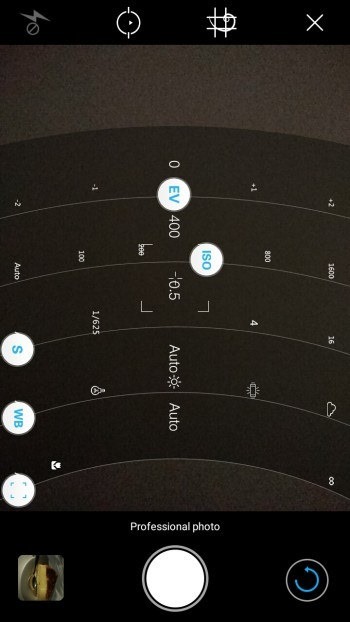
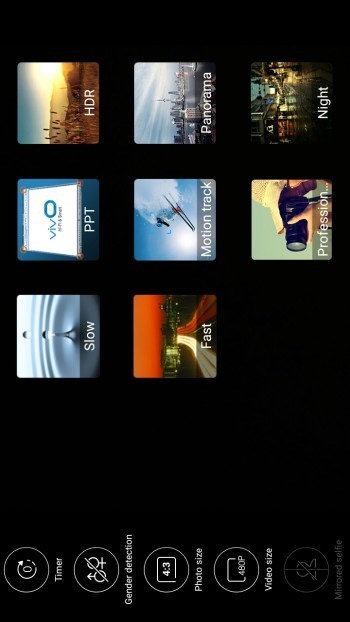 The daylight photos came out with good amount of detail. Any phone with a decent enough camera can capture good photos in daylight these days.
The daylight photos came out with good amount of detail. Any phone with a decent enough camera can capture good photos in daylight these days.


You can check out all images here
It is the low light photography that matters, and that’s exactly where Vivo V3 stands apart from the crowd.
Vivo V3 doesn’t have an exceptional camera like the flagship phones from Samsung, LG, and HTC for taking low-light photos, but it relies on its ‘Professional’ photo mode for delivering some great low-light photos.
Have a look at the low-light samples attached below and feast your eyes. Do notice how I got more details in the night sky and around the arm of the crane with long exposure.
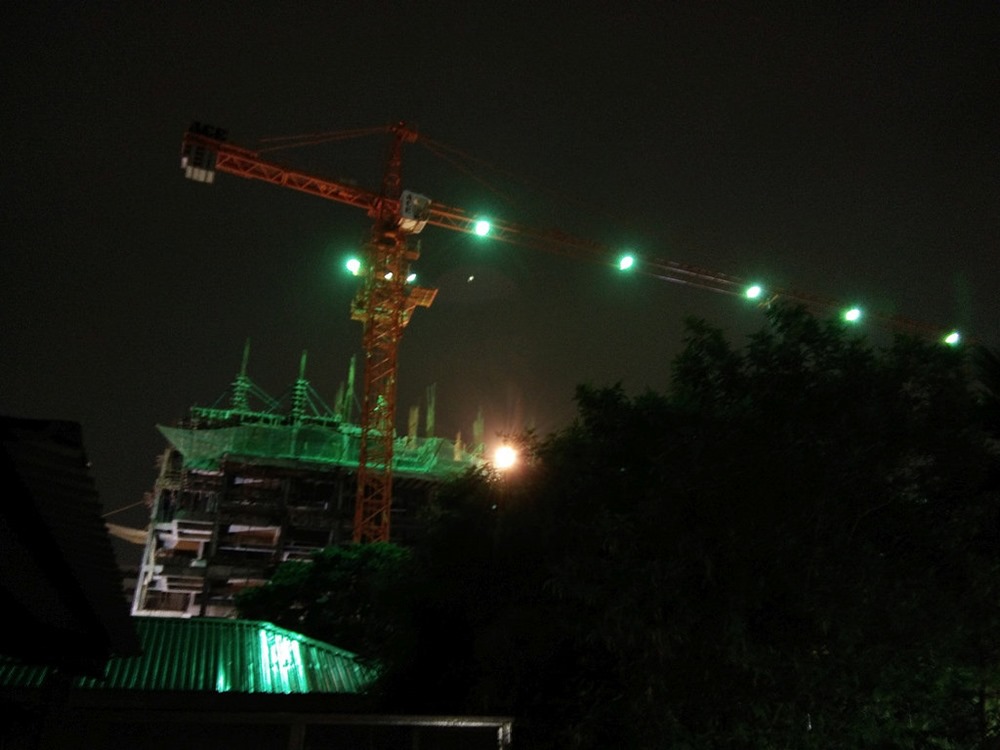
Note: You might notice that a few photos are somewhat blurred. This is because of the fact that they are shot at long exposure mode using bare hands. Most of you don’t carry a tripod for smartphone photography so it makes sense to test the imaging prowess of the phone not in the ideal conditions but in those in which it is actually going to be used.
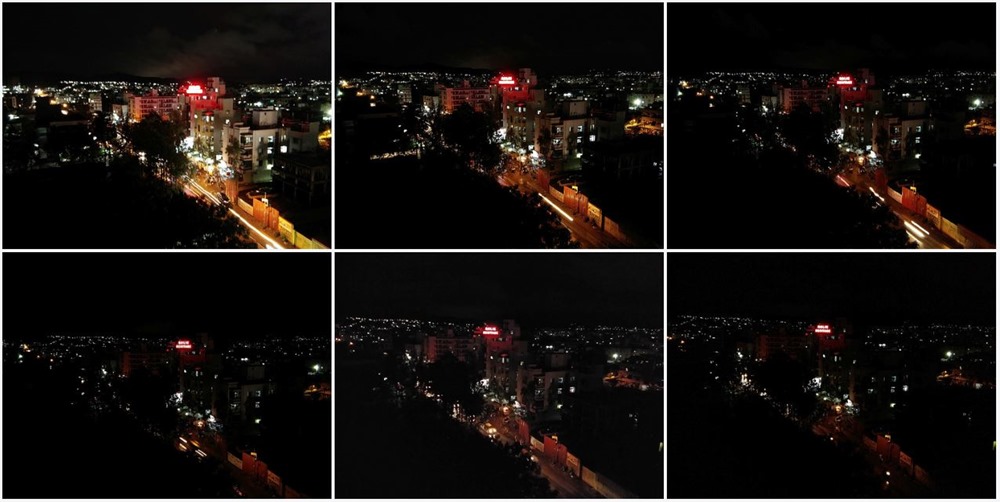
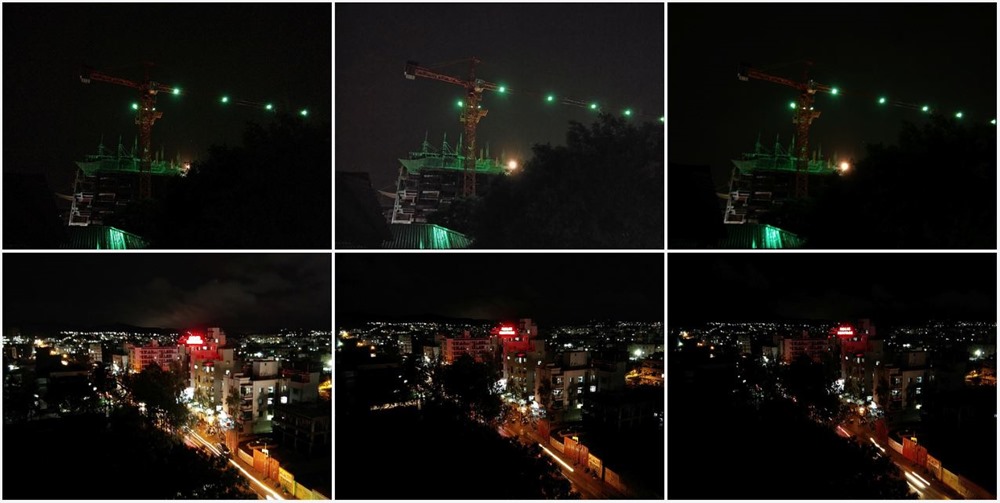
All full size images available here
Pro tip: Avoid using very high ISO or you’ll get grainy pictures similar to what I got in the ‘Night mode’. While taking a long exposure shot hold you phone as close as possible to your body for avoiding blurs. If you don’t have any breathing problem then you can also hold your breath for a few seconds for extra stability.
The front camera also does a nice job of capturing photos in good lighting conditions. If you want to take a selfie in low-light conditions then the phone will use its display as a flash for clicking selfies.
Battery
Vivo V3 packs a 2550 mAh battery sealed inside its unibody design. This might look like a small battery to you given the fact that most phones in this price range feature 3000+ mAh batteries. But Vivo V3 benefits from the fact that it only has an HD display (instead of full HD on most phones) which consumes significantly less power.
The phone will easily last you a day on full charge with regular usage not involving long ‘Pokémon Go’ and GPS navigation sessions.
Another important thing that made me call Vivo V3 as ‘Poor Man’s iPhone’ is its price tag. If you want to buy it then you would have to spend a good Rs. 4-6k extra than the phones packing similar features but the V3 works buttery smooth just like the iPhones.
So, if you are looking forward to buying a new Android phone with great looks, decent battery backup, and don’t care much about the price tag, then you should consider buying Vivo V3.
